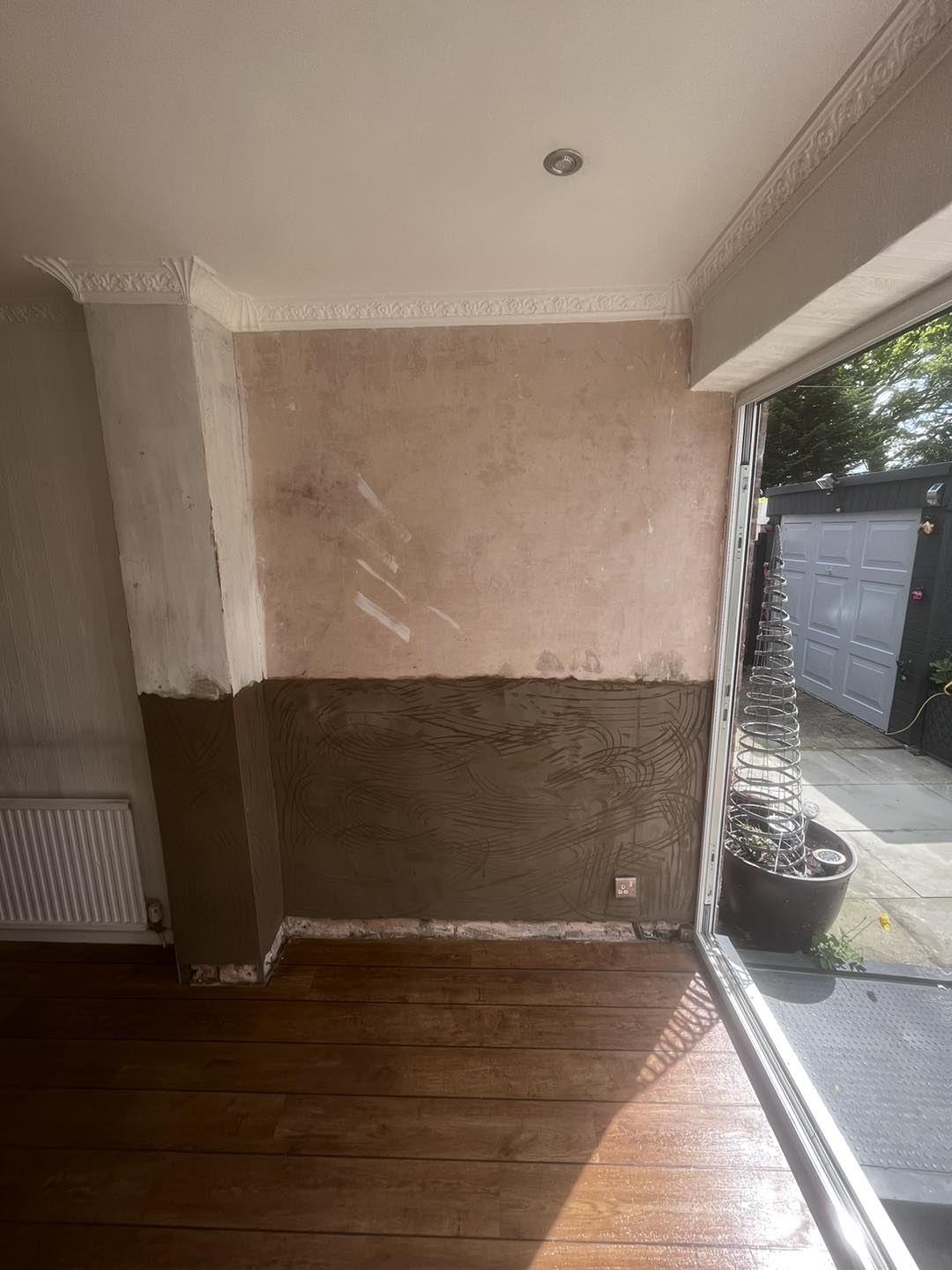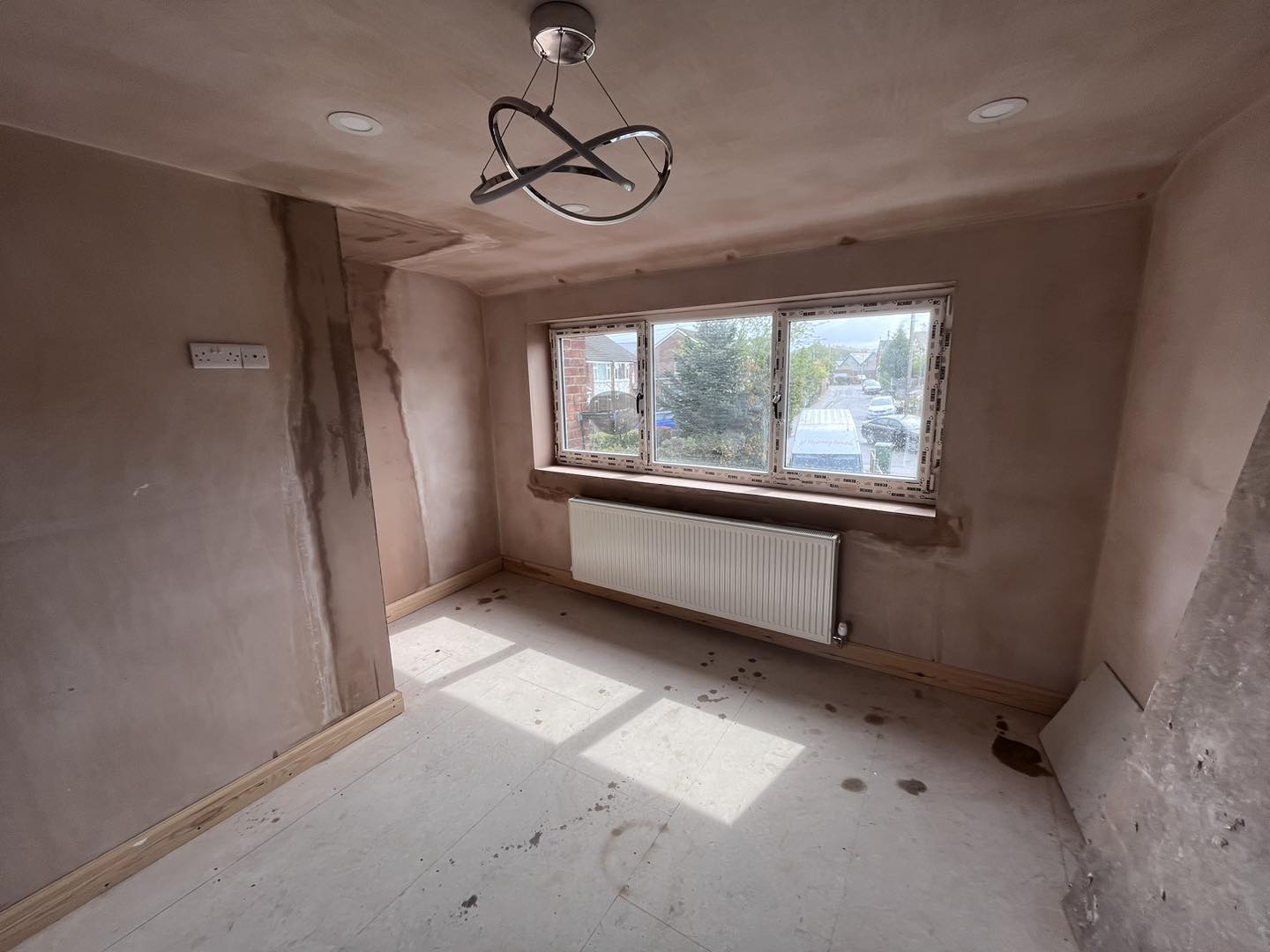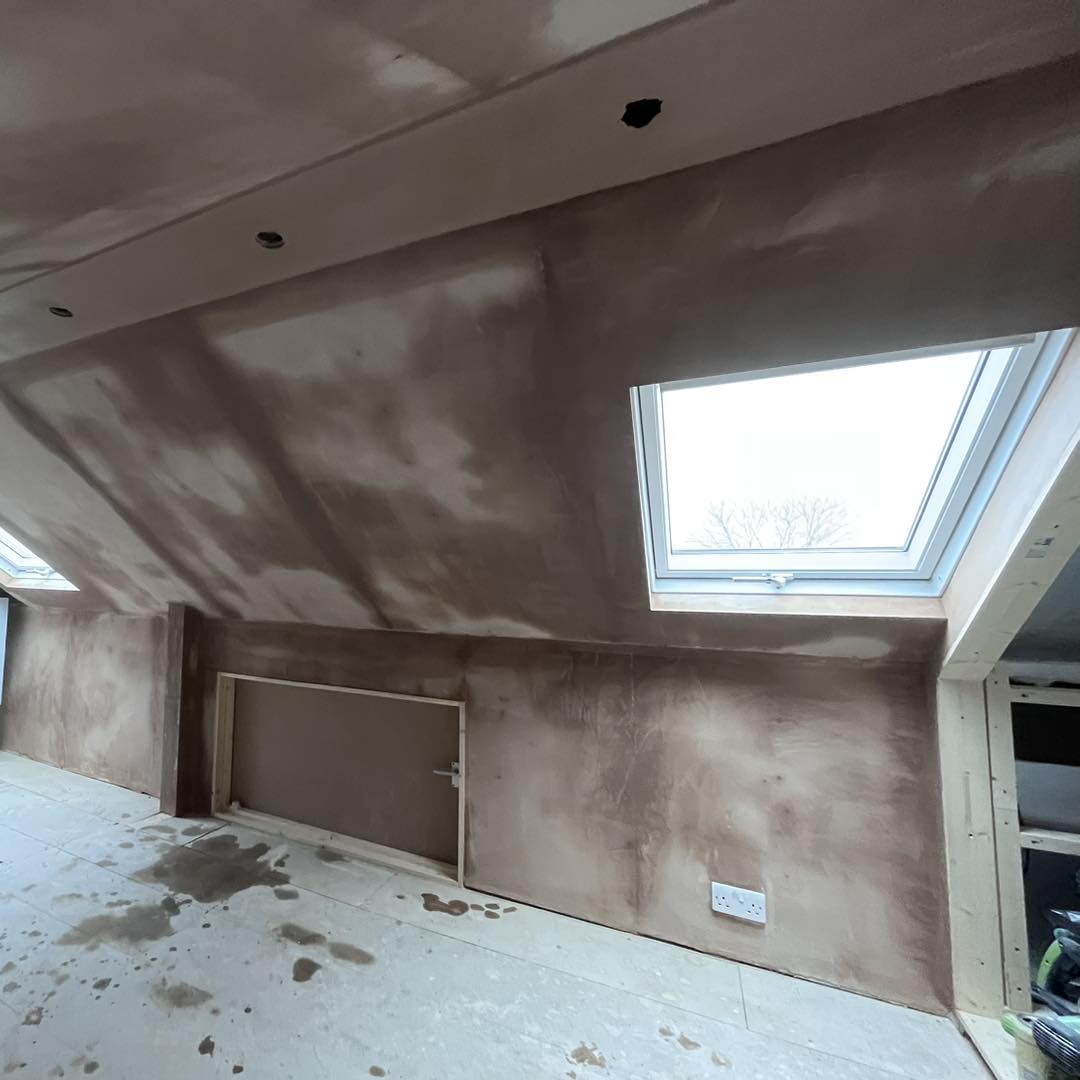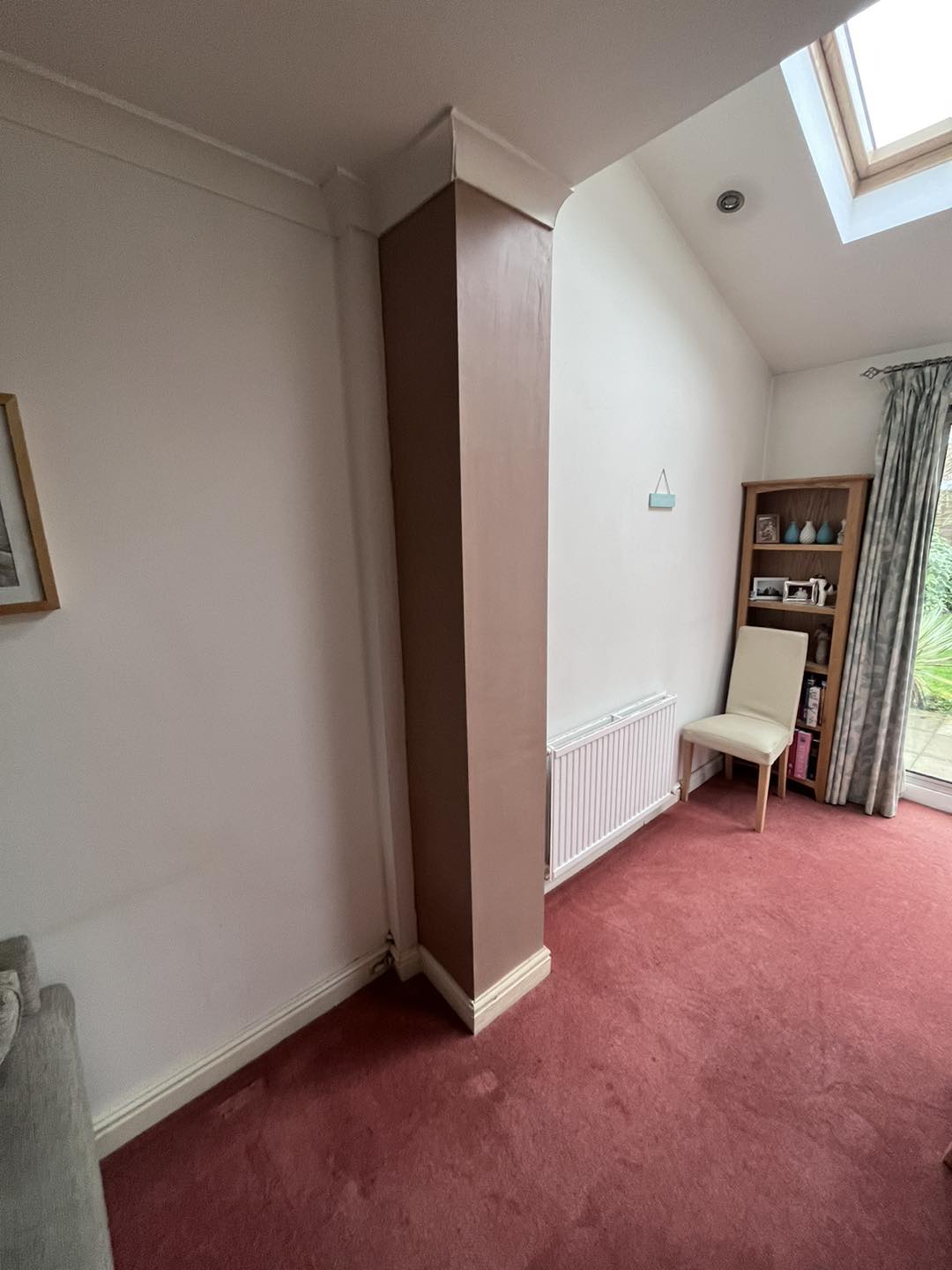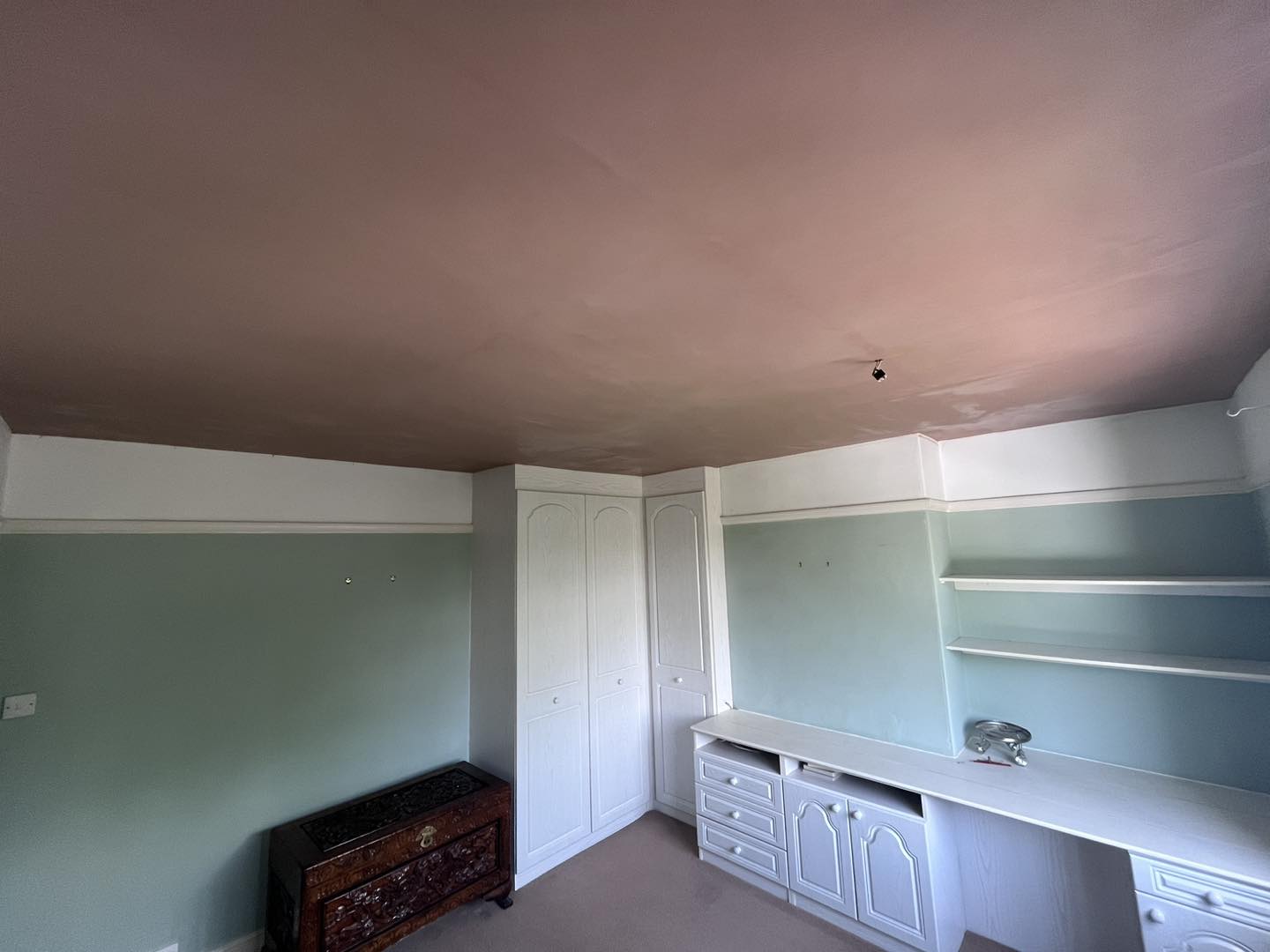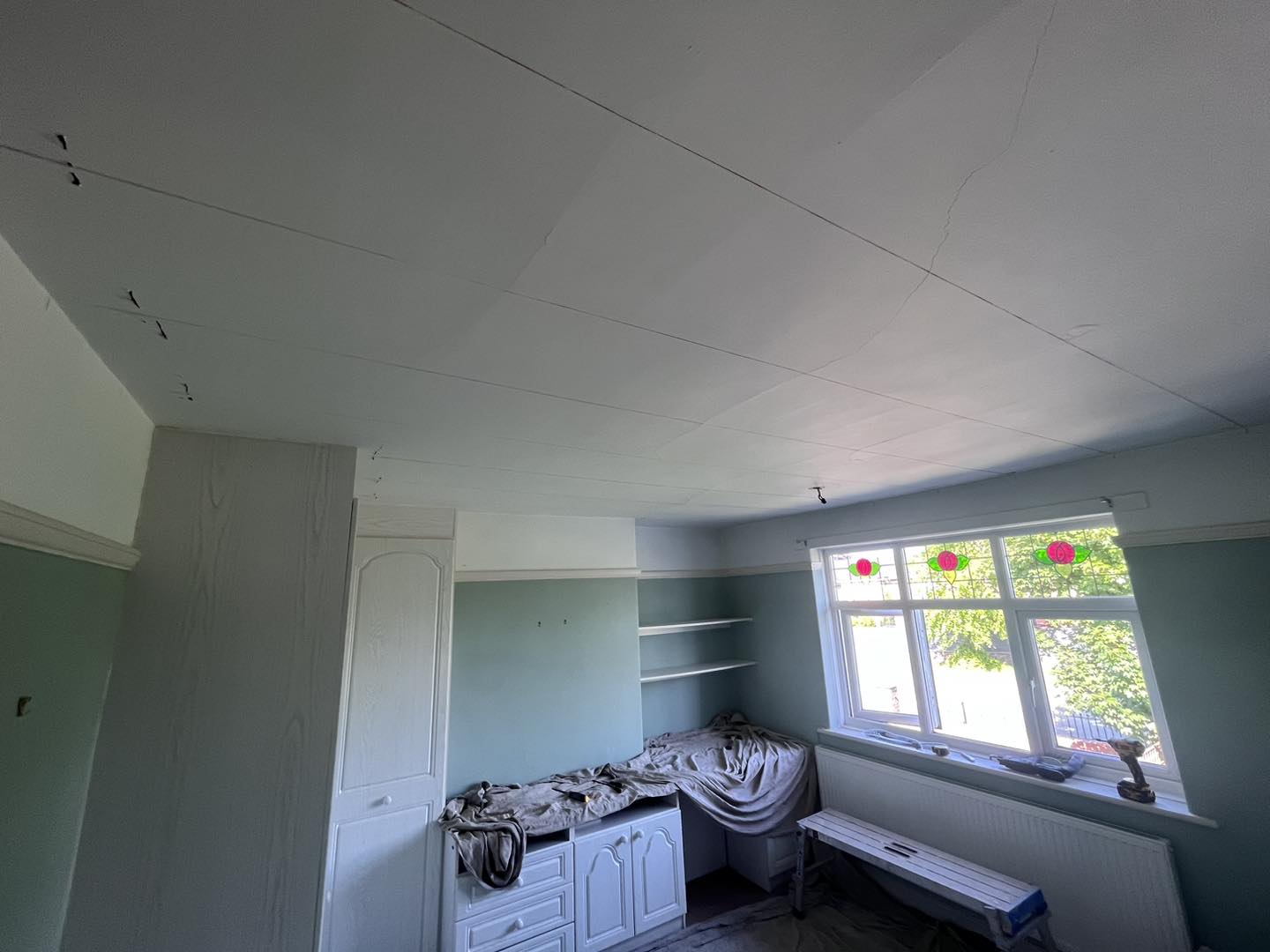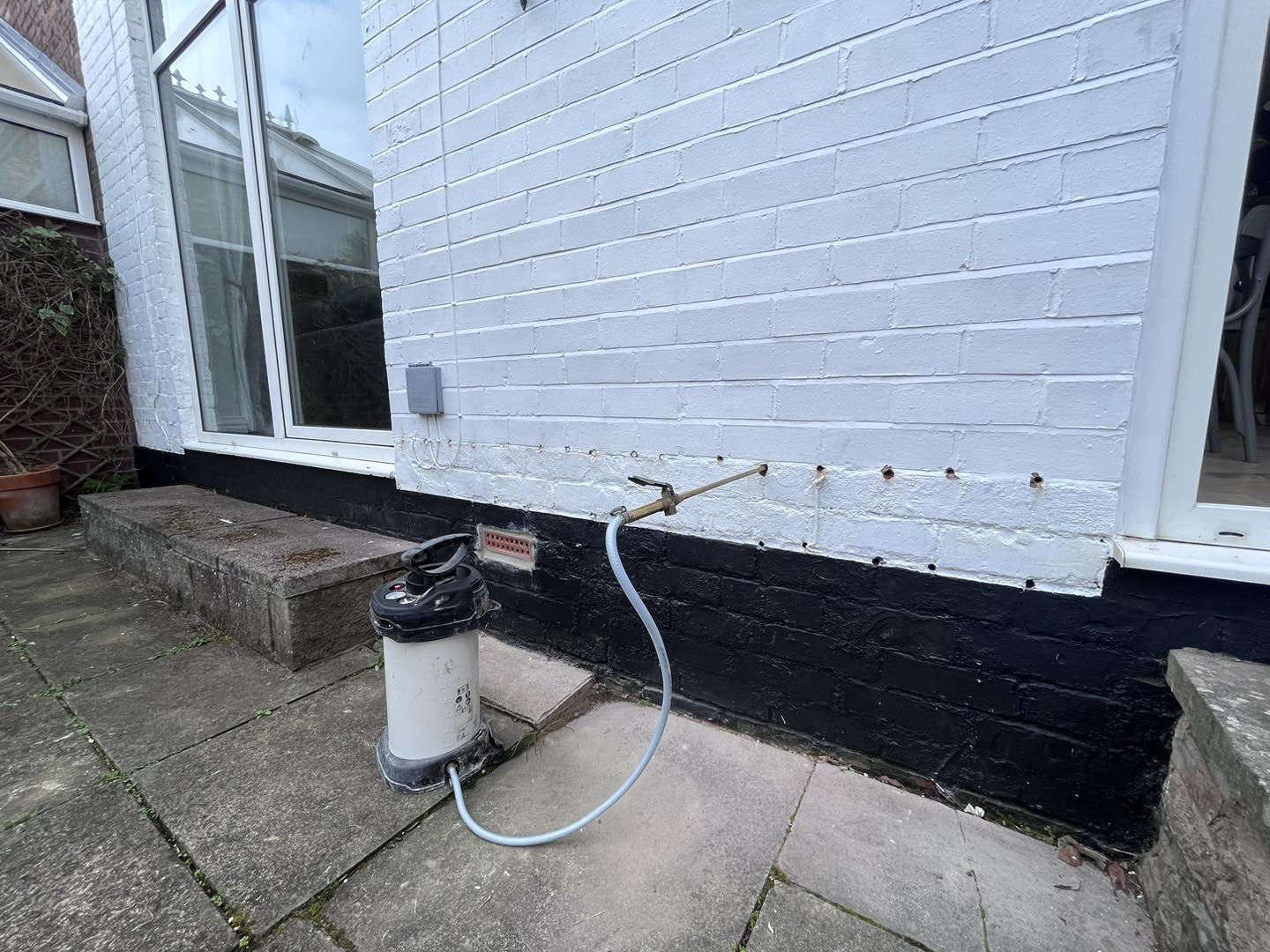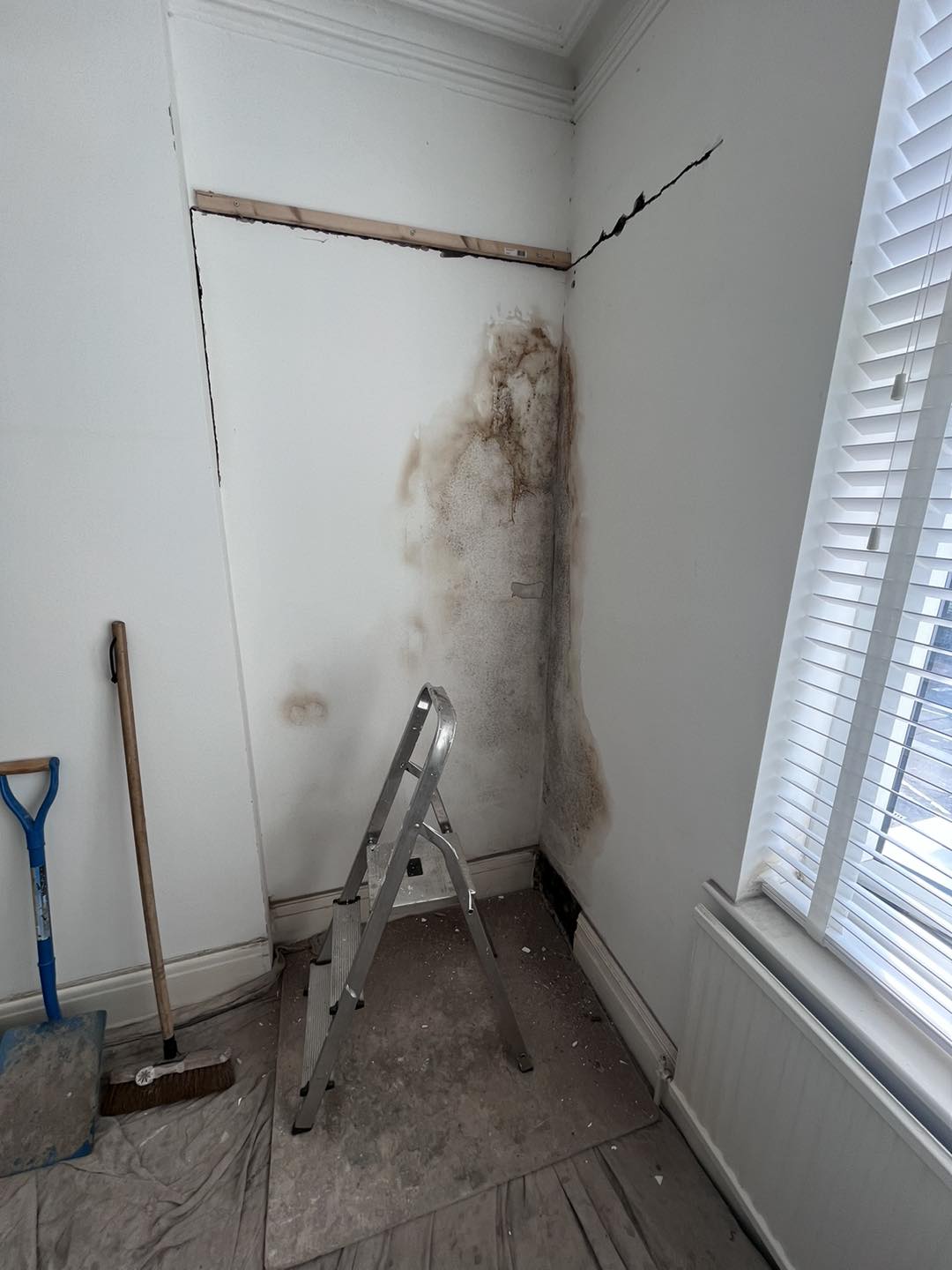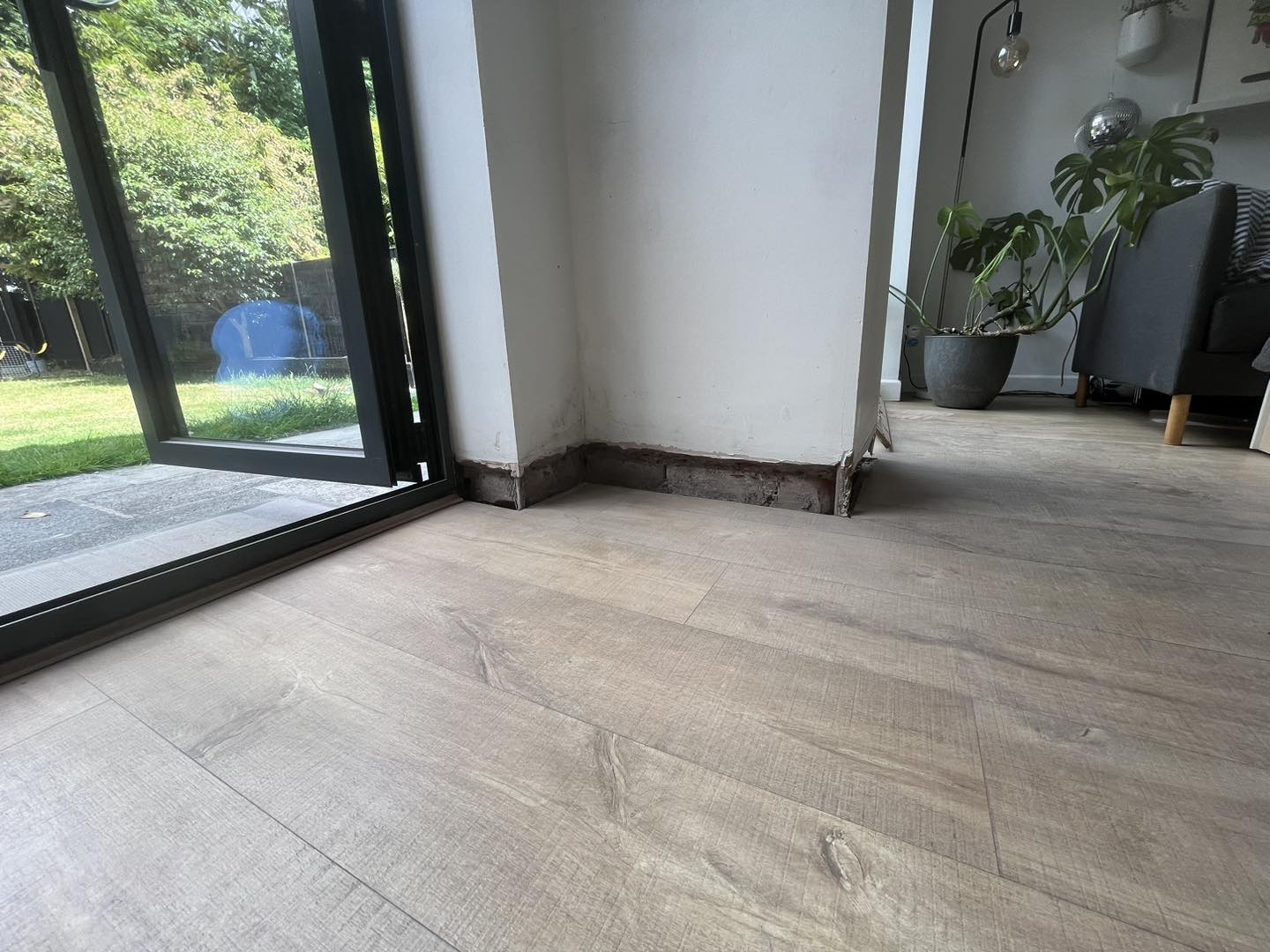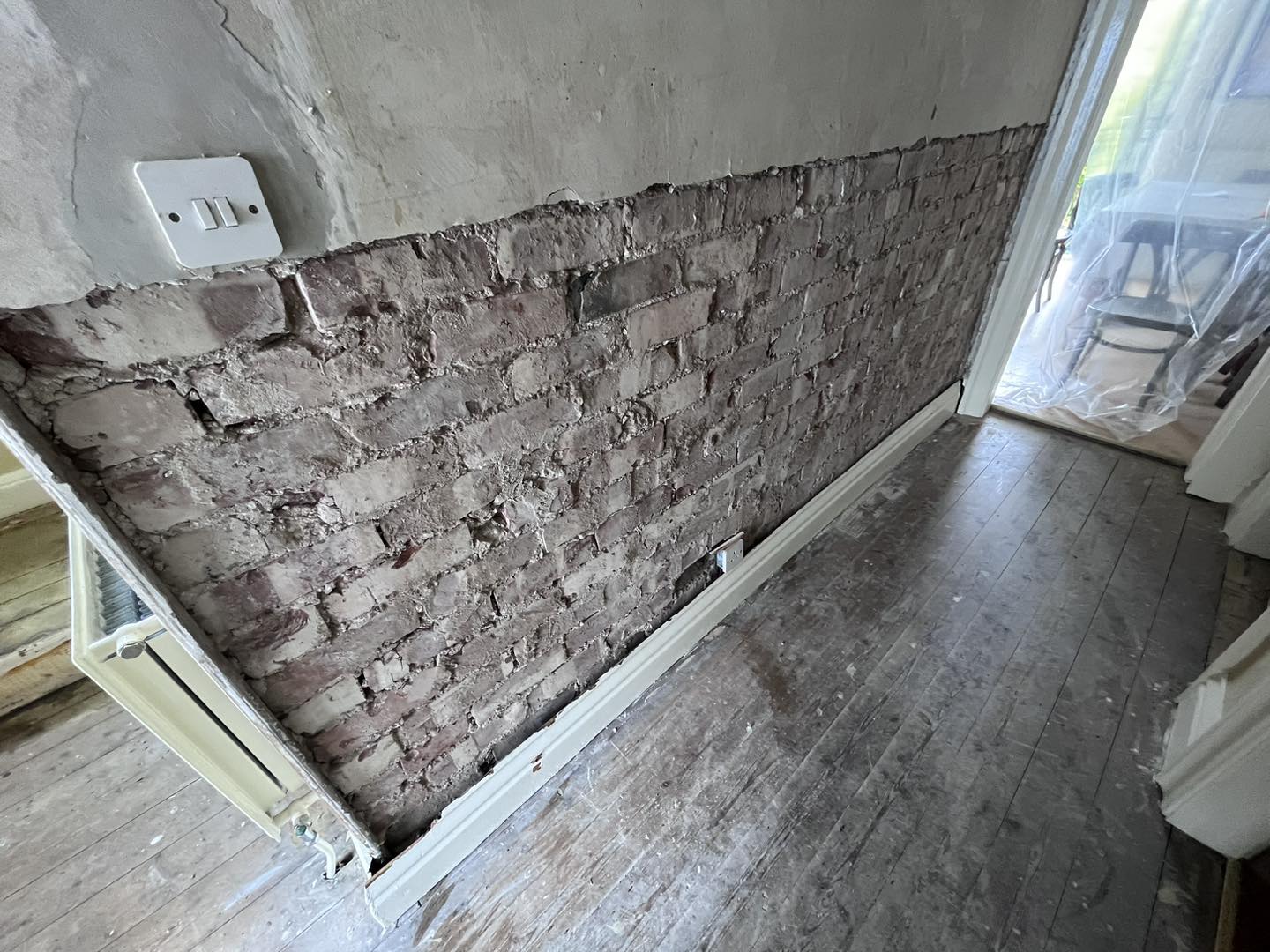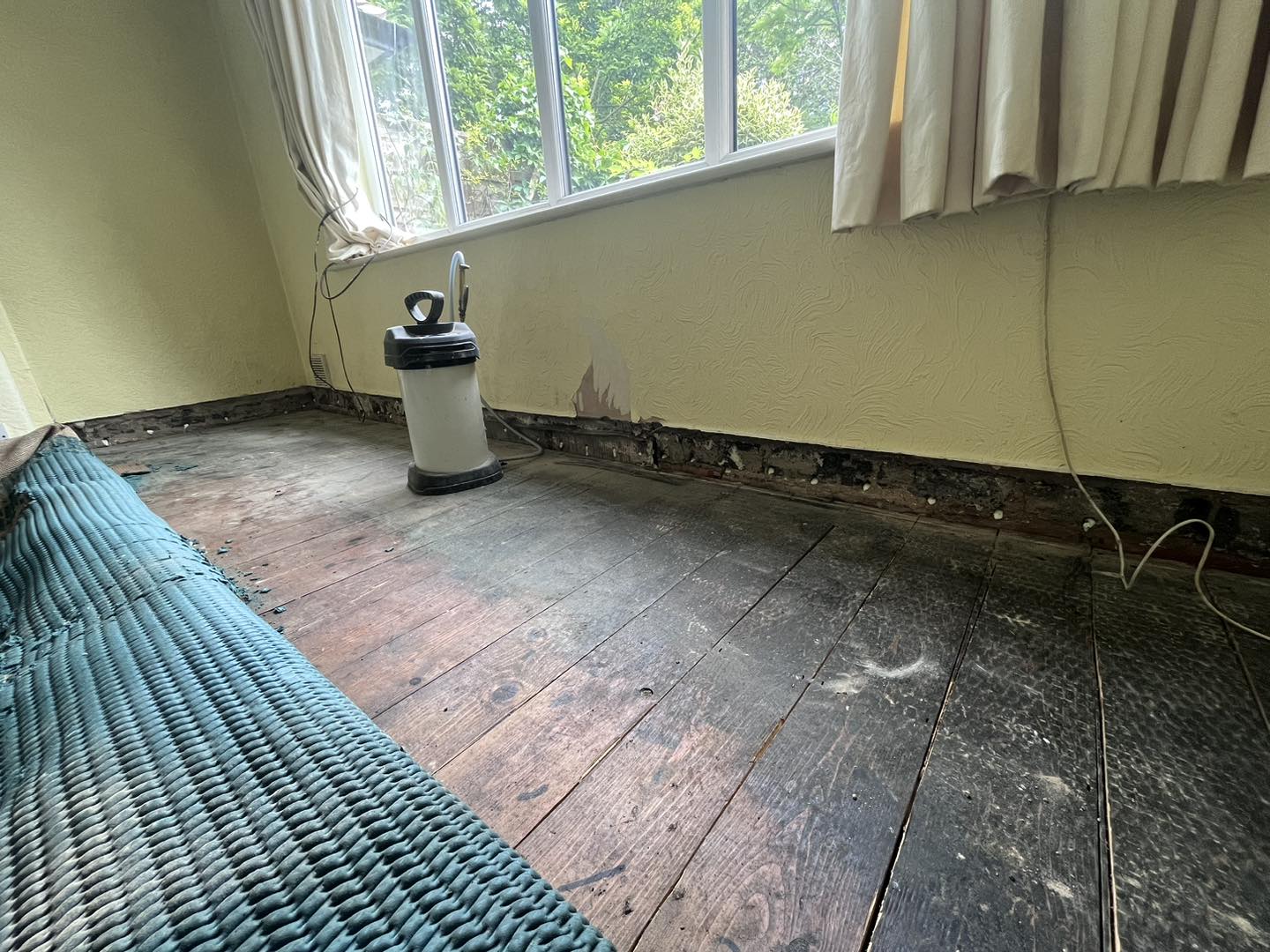Our Plastering Services
Discover the pinnacle of craftsmanship with DT Plastering Services & Damp Proofing Specialists' unrivaled plastering services. With a legacy of over a decade, we have perfected the art of transforming interiors into seamless canvases of elegance. Our skilled artisans bring life to walls, ceilings, and surfaces, achieving flawless finishes that captivate the eye. From traditional to contemporary designs, we tailor our approach to match your vision, infusing each project with precision and finesse. With DT Plastering Services & Damp Proofing Specialists, your space becomes a testament to quality and sophistication, reflecting our unwavering commitment to excellence in every stroke and texture. Experience the transformation firsthand by entrusting your plastering needs to the experts who turn ordinary spaces into timeless works of art.
Duties & responsibilities
Plastering provides a protective layer for various surfaces, such as walls and ceilings. It helps shield the underlying structure from moisture, weather elements, and general wear and tear. Plaster acts as a barrier against water infiltration, preventing damage to the building materials and reducing the risk of mold or mildew growth.
The duties and responsibilities of a plasterer can vary depending on the specific project and scope of work. However, here are some common tasks associated with the role:
Plasterers are responsible for preparing the surfaces to be plastered. This involves cleaning the area, removing any loose debris, and ensuring that the surface is smooth and free from imperfections. They may also apply primers or bonding agents to promote adhesion between the surface and the plaster.
Plasterers mix plaster materials according to the specific requirements of the project. They carefully measure and combine the plaster powder with water or other additives to achieve the desired consistency and workability. Proper mixing is crucial to ensure that the plaster sets and adheres properly.
Plasterers use various techniques to apply the plaster onto the prepared surfaces. They may use trowels, brushes, or spray equipment to spread the plaster evenly. Plasterers work in layers, building up the plaster thickness gradually while ensuring a smooth and level finish. They pay attention to details, such as corners, edges, and junctions, to achieve a seamless and cohesive surface.
Depending on the desired outcome, plasterers may apply different finishing techniques or textures to the plastered surface. This can include techniques like sponge finishing, trowel texturing, or decorative molding application. Plasterers have the skills to create various textures and patterns to meet the aesthetic requirements of the project.
Plasterers may also be involved in repairing and restoring existing plastered surfaces. This includes identifying and addressing issues such as cracks, holes, or water damage. They carefully remove damaged plaster, apply necessary repairs, and match textures and finishes to blend with the surrounding areas.
After completing the plastering work, plasterers are responsible for cleaning up the work area and properly disposing of any waste materials. They may also provide guidance on the maintenance and care of plastered surfaces to ensure their longevity.
Types of Plasterers
There are different types of plasterers, each specialising in specific aspects of the plastering trade. Here are a few common types of plasterers:
Solid Plasterer: Solid plasterers focus on traditional plastering techniques, working with materials like gypsum plaster or cement render. They apply plaster directly to surfaces such as walls, ceilings, or partitions to create a smooth and even finish. Solid plasterers may also be skilled in decorative plasterwork, such as creating ornate moldings or intricate designs.
Drywall Finisher: Drywall finishers, also known as drywall tapers or finish carpenters, specialize in working with gypsum board (drywall) to create seamless and smooth surfaces. They apply joint compounds, also known as mud, to cover and conceal the joints between drywall panels, as well as nail or screw indentations. Drywall finishers carefully sand and feather the compound to achieve a flawless finish ready for painting or other wall treatments.
Contact DT Plastering Services and Damp Proofing Specialists for Inquiries & Booking Arrangements
Our damp proofing
Eradicate the menace of dampness with DT Plastering Services & Damp Proofing Specialists' exceptional damp-proofing services. Our proven techniques and state-of-the-art solutions shield your property from the damaging effects of moisture. From rising damp to condensation issues, our adept team employs strategic methods to ensure a dry and secure environment. With a solid reputation built over a decade, we stand as your reliable partner in preserving the integrity of your space. Experience the assurance of a damp-free future with DT Plastering's unparalleled expertise.
What causes Rising Damp
Rising damp refers to the upward movement of moisture within building materials through capillary action. If this moisture infiltrates susceptible materials, it can pose a significant concern, especially when it occurs in occupied areas of the building. A damp-proofing course is in place in newer properties to prevent this phenomenon and safeguard your property from such issues. However, when the damp-proof course is old, damaged, or improperly installed, it allows moisture to ascend through the brickwork or stonework, impacting the internal surfaces of your property.
A damp-proof course constitutes a waterproof layer within your wall, ideally positioned approximately 150 mm (six inches) above the external ground level for outer walls and near the floor or below it for internal brick walls. This waterproof layer serves as a barrier between the bricks or stonework throughout the property, designed explicitly to halt the rise of dampness within the masonry walls of your property.
Even if your property's damp-proof course is in good condition, you may still experience issues with rising damp. In such cases, it's probable that the damp-proof course has been compromised, allowing water to bypass it and continue its upward journey. This can occur due to various factors, such as materials attached to your walls facilitating water movement around the damp-proof course or situations where the ground level outside your wall is higher than the damp-proof course, or there are external structures like steps bridging the course. These conditions create opportunities for moisture to ascend and affect the wall above the damp-proof course.
Damp-proof courses can be bridged through several means. For instance, internal plaster may connect directly to a solid floor at the base of your internal wall. Cavity walls can accumulate debris, potentially originating from construction materials or faulty damp cavity wall insulation. If this debris or damp insulation is positioned higher than the damp-proof course, it can serve as another conduit for moisture to traverse from the ground through the wall, causing rising damp.
However, it's essential to note that damp problems in your property might not always be attributed to rising damp. If you notice damp patches extending higher than one metre above your wall's base and appearing sporadic, you're more likely dealing with penetrating damp.
Capillary action is the phenomenon responsible for the occurrence of rising damp. It involves the ability of moisture to ascend through capillaries, which are tiny pores within materials. In the context of masonry, if left unchecked, capillary action can exert a significantly adverse influence on your property by giving rise to the problem of rising damp.
The origin of rising damp lies in moisture ascending through the capillaries present in masonry. Capillaries are slender, elongated tubes or pores within the material, and they come in various sizes within masonry. The tighter the pore structure, the more resistant the material is to capillary action and, consequently, rising damp. For instance, standard bricks and mortar possess larger pores compared to engineering bricks, which feature a denser pore structure. As a result, moisture will ascend to a greater height within the standard brick due to its more porous nature.
What happens if rising damp is left untreated
Failure to promptly address damp conditions can have a severe impact on your property's walls. Excessive dampness can harm both the internal wall structure and the vulnerable timber components, which, in many older properties, can constitute up to seventy-five per cent of the overall structure. Keeping your timber dry is crucial for safeguarding this integral element of your building's integrity.
Dampened timbers may potentially lead to the growth of dry or wet rot. These conditions break down the wood cells, rendering the timber soft and spongy. Often, the wood loses its strength, darkens, and becomes prone to crumbling and potential disintegration due to fungal infestation.
Among these, dry rot stands out as one of the most destructive fungal infestations that can affect your moistened timber and severely impact your property. Dry rot is a fungus capable of spreading across both timber and masonry. It can potentially invade any part of your house and even penetrate your neighbour's property through shared walls. This fungus proliferates rapidly, necessitating urgent treatment when a dry rot infestation is detected.
Furthermore, neglecting to rectify elevated moisture levels and dampness in your property can attract wood-destroying insects, commonly known as woodworms. Woodworm is the larval stage of wood-boring beetles. These insects feed on the timber in your property, potentially causing a progressive weakening of your property's structural stability. Specialists can prescribe the appropriate remedial measures to eliminate the infestation from your property.
treating rising damp
To effectively address the issue of rising damp, it is essential to accurately pinpoint its root causes before determining the appropriate remedial treatment. One of the most common mistakes made by property owners when dealing with rising damp is attempting quick fixes to mask the problem. Simply painting over visible dampness will not resolve the underlying issue; instead, it will incur additional expenses for cosmetic repairs without addressing the source of the damp problem.
If you're aware that your damp-proof course has been breached, you can consider adjusting or removing the object responsible for the breach. By eliminating or isolating the bridge from the damp-proof course, you can prevent rising damp from affecting the wall above an effectively functioning damp-proof course.
However, if removing the bridging object isn't feasible or if your damp-proof course is malfunctioning, you may need to install an entirely new damp-proof course or apply a waterproof membrane to your walls. A specialized surveyor can assess the damp problem and provide a suitable specification to rectify the issue in your property. This may involve installing the initial damp-proof course for your property or applying a chemical damp-proof course to repair an existing, faulty one.
Damp walls are commonly misdiagnosed. To the untrained eye, it can be very difficult to pinpoint the type of damp your property is suffering from. It is crucial that the exact source of the dampness is thoroughly investigated as an inaccurate diagnosis can result in additional damage and unnecessary costs being incurred. Therefore, if there is any doubt in the type of damp problem it is highly recommended to ask one of our specialists who will ensure your damp problem is dealt with effectively.
A damp survey from DT Plastering Services and Damp Proofing specialists can prove critical with regards to ensuring that your property is able to tackle your rising damp problem in a timely and efficient manner. Damp Proof Course remedial work carried out by our specialists come with up to a 10-year Certificate of guarantee to give you peace of mind that your rising damp problem has been solved. Uncertified specialists can often misdiagnose the source of your damp issue which can result in your maintenance budget being wasted unnecessarily.
All property owners should aim to keep their property dry and to diagnose and treat any damp issues they find in a common sense and cost-effective way. Since 2014 this is precisely what DT Plastering Serviced and Damp Proofing specialists provide.
external penetrating damp symptoms
It is important for property owners to note that penetrating damp symptoms can be prevalent and affect both the internal and external fabric of your property.
Damaged Brickwork
Damaged brickwork on external walls is one of the most common symptoms of penetrating damp. This tends to be caused by frost damage over time. As moisture freezes it expands. If this moisture has penetrated the brickwork it will expand in freezing conditions which can easily result in cracks within the structure of the wall.
Moss On Brickwork
Walls that are damp provide the perfect platform for algae and moss to grow. Damp being able to penetrate masonry provides an ideal location for moss to develop, which can result in an unsightly appearance. The excessive damp to the wall may be due to defective rainwater gutters or downpipes which allow water to run down the wall.
Where Can Penetrating Damp Occur?
Buildings which have been built with solid walls are considerably more likely to suffer from damp as a result of penetration of moisture than properties built with cavity walls. Cavity wall construction includes an air gap between the external and internal walls. This ensures that moisture is not given easy access to the internal walls.
It is important to note that cavity walls are not entirely exempt from penetrating damp. Cavities within walls can commonly become blocked, which provides water with a bridge to travel over. This allows moisture access to the internal wall, despite the air gap being designed to prevent this from happening. Numerous cavity walls have had insulation fitted years after the property was built which fills the gap between the walls. If the outer wall of the cavity allows rainwater to penetrate then this could soak the insulation in the cavity. The wet insulation then transfers the moisture to the inner wall resulting in damp affecting the wall inside the property.
what causes penetrating damp
Accurately locating the source of a penetrating damp issue is essential with regard to resolving the overall penetrating damp problem. Penetrating damp can be caused by various property issues.
The most common causes have been listed below alongside potential solutions.
Bricks will gradually become damaged or porous as time goes by. If they have become porous and water is now able to penetrate them, they will need to be repaired. Alternatively, a waterproof solution that protects the bricks can be utilised which will repel the water.
Water will be able to penetrate through if render has been damaged. Where possible, small cracks should be repaired using sealant or new render.
This is arguably the most common penetrating damp cause. With overflowing gutters allowing excess water to run down the building fabric.
Defective window pointing can allow damp through. Also, blocked drip strips on the windowsill due to a significant build-up of moss and dirt are relatively common. If you identify that your windows drip strips are blocked ensure that these are then cleaned to stop rainwater running off the window and down the wall. If windows appear visibly damaged then it is likely that you will need to repair or replace them.
Defective window pointing can allow damp through. Also, blocked drip strips on the windowsill due to a significant build-up of moss and dirt are relatively common. If you identify that your windows drip strips are blocked ensure that these are then cleaned to stop rainwater running off the window and down the wall. If windows appear visibly damaged then it is likely that you will need to repair or replace them.
Defective roof coverings can cause water to penetrate your property. If you possess the relevant experience then you should replace all cracked and missing tiles or slates on your roof. Loose flashing will also need to be repaired or replaced. Most people would use a professional roofer to do this work.
Penetrating damp tends to occur if you live in a property which has building defects. Some of the most common cases of penetrating damp arise as a result of defective masonry, pointing and render. As previously mentioned, brickwork, render and pointing can deteriorate over time due to physical damage or frost. This may be closely related to the reason why it is most commonly older properties which suffer from penetrating damp. The building fabric of older properties may deteriorate over time and become defective as a result of storm damage. This may prevent these materials from performing as they were initially intended and stop penetrating damp.
If a building's external fabric is failing to be as effective as it should be, this may mean that your property is allowing moisture to penetrate through its walls. This is a clear indication that any waterproofing or water-repellent system that is currently in place is not performing its role of Penetrating Damp.

